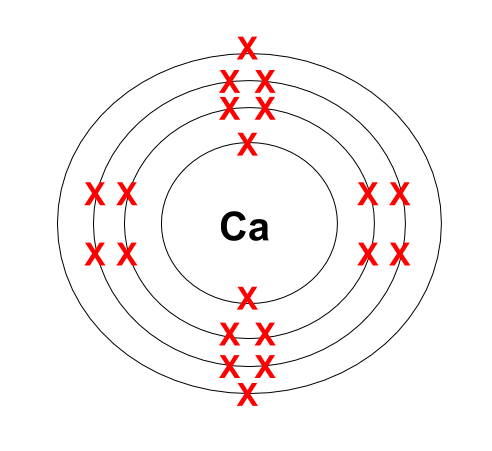4.3-How are Electrons Distributed in Different Orbits (Shells)
4.3-How are Electrons Distributed in Different Orbits (Shells) Important Formulae
You are currently studying
Grade 9 → Science → Structure of the Atom → 4.3-How are Electrons Distributed in Different Orbits (Shells)
- Get conversant with the Bohr and Bury rules for distribution of electrons into different orbits.
Atomic number and mass number are fundamental concepts in understanding the structure of atoms. They provide crucial information about the identity and characteristics of elements. This section will explore their definitions, significance, and differences.
1. Atomic Number ($Z$):
The atomic number is defined as the number of protons present in the nucleus of an atom. It is denoted by the symbol $Z$. The atomic number determines the identity of an element and its position in the periodic table. For example:
- Hydrogen has an atomic number of 1 ($Z = 1$).
- Carbon has an atomic number of 6 ($Z = 6$).
- Oxygen has an atomic number of 8 ($Z = 8$).
The atomic number also indicates the number of electrons in a neutral atom, as the number of protons equals the number of electrons. This relationship is essential for understanding chemical bonding and reactions.
2. Mass Number ($A$):
The mass number is defined as the total number of protons and neutrons in the nucleus of an atom. It is denoted by the symbol $A$. The mass number can be calculated using the formula: $$ A = Z + N $$ where $N$ is the number of neutrons. For example:
- In a carbon atom, with 6 protons and 6 neutrons, the mass number is $A = 6 + 6 = 12$.
- In an oxygen atom, with 8 protons and 8 neutrons, the mass number is $A = 8 + 8 = 16$.
Mass number provides insight into the isotopes of an element. Different isotopes of the same element have the same atomic number but different mass numbers due to varying numbers of neutrons. For example:
- Carbon-12 ($^{12}_6\text{C}$): 6 protons and 6 neutrons.
- Carbon-14 ($^{14}_6\text{C}$): 6 protons and 8 neutrons.
3. Differences Between Atomic Number and Mass Number:
The key differences between atomic number and mass number are summarized as follows:
- Definition: Atomic number ($Z$) is the number of protons; mass number ($A$) is the sum of protons and neutrons.
- Significance: The atomic number determines the identity and properties of an element; the mass number helps identify isotopes.
- Symbol: Atomic number is represented as $Z$; mass number is represented as $A$.
- Example: For carbon ($^{12}_6\text{C}$), $Z = 6$ and $A = 12$.
4. Role in the Periodic Table:
The atomic number plays a crucial role in organizing the periodic table. Elements are arranged in order of increasing atomic number, which reflects their increasing proton count. The periodic table's structure reveals trends in properties such as reactivity, electronegativity, and ionization energy, which are linked to the atomic number.
The mass number, while not used for organization in the periodic table, is essential for understanding the different isotopes of elements and their applications in fields such as nuclear chemistry and medicine. For example, isotopes of elements can be used in imaging techniques and radiotherapy.
Understanding atomic number and mass number is vital for grasping the concepts of atomic structure, chemical behavior, and the nature of matter. These concepts serve as a foundation for further studies in chemistry and related sciences.

Paulgwilliamson, CC BY-SA 4.0, via Wikimedia Commons
4.3-How are Electrons Distributed in Different Orbits (Shells)
अणु में इलेक्ट्रॉनों का वितरण उनके ऊर्जा स्तरों या कोशिकाओं (shells) में होता है। इन कोशिकाओं को K, L, M, N आदि नामों से दर्शाया जाता है। प्रत्येक कोशिका में एक निश्चित संख्या में इलेक्ट्रॉन समाहित हो सकते हैं।
प्रत्येक कोशिका में इलेक्ट्रॉनों की अधिकतम संख्या को निर्धारित करने के लिए निम्नलिखित सूत्र का उपयोग किया जाता है:
Maximum number of electrons in nth shell = $2n^2$
जहां n कोशिका का क्रमांक है (जैसे, K-shell के लिए n = 1, L-shell के लिए n = 2, आदि)।
कोशिकाओं का वितरण
कोशिकाओं में इलेक्ट्रॉनों का वितरण निम्नलिखित प्रकार से होता है:
- K-कोशिका: यह अणु का सबसे निकटतम ऊर्जा स्तर होता है और इसमें अधिकतम 2 इलेक्ट्रॉन हो सकते हैं।
- L-कोशिका: इसमें अधिकतम 8 इलेक्ट्रॉन समाहित हो सकते हैं।
- M-कोशिका: इसमें अधिकतम 18 इलेक्ट्रॉन हो सकते हैं।
- N-कोशिका: इसमें अधिकतम 32 इलेक्ट्रॉन समाहित हो सकते हैं।
इलेक्ट्रॉन वितरण का उदाहरण
यदि हम किसी अणु के इलेक्ट्रॉनों का वितरण उदाहरण से समझें, जैसे कि ऑक्सीजन (O) अणु में 8 इलेक्ट्रॉन होते हैं। इसे निम्नलिखित तरीके से वितरित किया जाएगा:
इस प्रकार ऑक्सीजन अणु में 8 इलेक्ट्रॉन होते हैं, जिन्हें K और L कोशिकाओं में वितरित किया गया है।
एडिटिव नियम
इलेक्ट्रॉनों का वितरण कोशिकाओं में एडिटिव नियम के आधार पर किया जाता है, जिसका मतलब है कि प्रत्येक कोशिका में इलेक्ट्रॉन भरने के बाद, अगली कोशिका में इलेक्ट्रॉन जोड़े जाते हैं।
कक्षाओं में इलेक्ट्रॉन के स्थान निर्धारण के नियम
इलेक्ट्रॉनों का वितरण नियमों के आधार पर होता है, जैसे:
- ऑर्बिटल सिद्धांत: इलेक्ट्रॉन पहले उच्चतम ऊर्जा वाली कक्षा में स्थानांतरित होते हैं।
- ऑर्बिटल filling: ऑर्बिटल इलेक्ट्रॉन पहले उन कक्षाओं में आते हैं जिनका ऊर्जा स्तर कम होता है।
इस प्रकार, अणु में इलेक्ट्रॉनों का वितरण उनके ऊर्जा स्तरों के अनुसार व्यवस्थित और क्रमबद्ध होता है।
